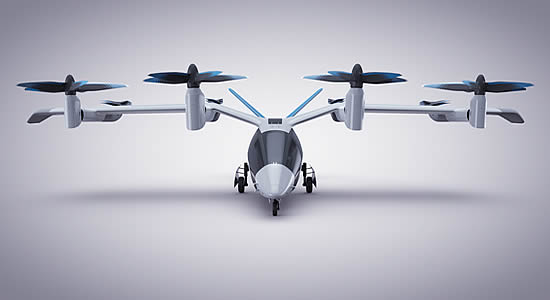 |
FutureFlight platform tracks new aviation technologies and business modelsBy Charles Alcock, Senior Editor of Aviation International News and FutureFlight. |
Even before the unwelcome intrusion of Covid, aviation was on the cusp of accelerated change, with pressure to be more environmentally sustainable and wider demand for more efficient modes of transport converging as a catalyst for progress.
This has sparked a gold-rush of investment and innovation largely concentrated on the development of electric vertical takeoff and landing (eVTOL) aircraft. At last count, there were more than 200 new projects vying for attention and money, rising to almost 300 if you count all the hoverbikes, flying cars and an assortment of far-fetched contraptions seeking to defy gravity.
The potential for genuinely new aviation technologies, such as carbon-free propulsion and autonomous flight, to become viable is exciting, but also more than a little baffling and steeped in more than a little over-blown hype. The same can be said for some of the new aviation business models this technology is spawning, such as so-called urban air mobility taxi services.

Vertical Aerospace is leading the most advanced UK based eVTOL programme.
Making sense of all this is the mission of the new FutureFlight.aero platform from Aviation International News. The FutureFlight team, which I am delighted to lead, has spent more than a year building a searchable database of new aircraft projects. The site also provides extensive details of all the technologies supporting these, including artificial intelligence, batteries and alternative fuels, such as hydrogen. Fresh news is posted each day and subscribers receive a weekly newsletter summarising the most recent developments.
In the time it’s taken to launch FutureFlight.aero the scope of the new aviation technologies and business models has broadened. Not only that, but the boundaries between the somewhat ‘new age’ and disruptive mindset of the eVTOL crowd and the aviation and aerospace mainstream have started to break down.
Many people ask what the dreaded “year of Covid” has meant for this new branch of aviation, apparently with the expectation that investment in new projects would dry up. Perhaps surprisingly, funds do still seem to be available, but it seems increasingly clear that many of the new projects will stall. That was always going to be the case, but it’s clear that some of the newcomers’ plans are stalled. I call it accelerated Darwinism.
More traction in fixed wing projects
One trend that has emerged since the start of 2020 is that fixed wing aircraft projects seem to be gaining more momentum, while some of the new eVTOL developments seem to be in slow mode. Hydrogen power is getting increased attention, as evidenced by Airbus’s announcement in September that it is prioritising plans in this area. We’re also seeing several projects that are focused on converting existing aircraft to new modes of propulsion and also autonomous flight controls.
In my view, this is possibly the most exciting and unpredictable era in the industry that I’ve covered in more than 30 years as an aviation journalist. FutureFlight.aero is intended to make sense of it all for subscribers, based on AIN’s relentlessly independent and objective approach to news.

BlueSky Business Aviation News | 8th October 2020 | Issue #576
Share this article




